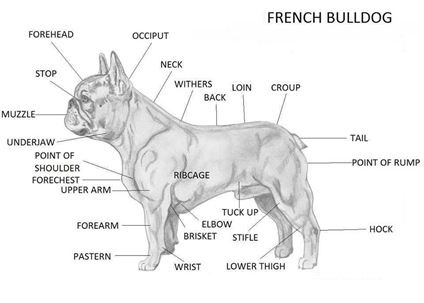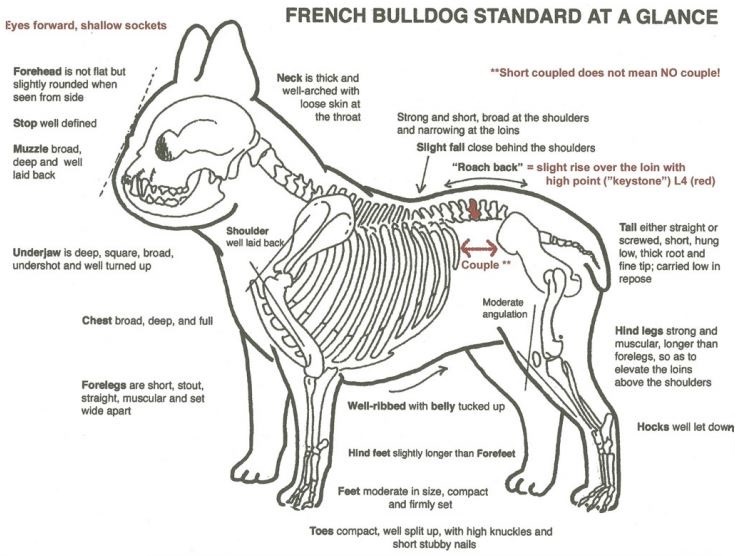|
Overview of the French Bulldog
The French Bulldog resembles a Bulldog in miniature, except for the large, erect “bat ears” that are the breed’s trademark feature. The head is large and square, with heavy wrinkles rolled above the extremely short nose. The body beneath the smooth, brilliant coat is compact and muscular.
The bright, affectionate Frenchie is a charmer. Dogs of few words, Frenchies don’t bark much—but their alertness makes them excellent watchdogs. They happily adapt to life with singles, couples, or families, and do not require a lot of outdoor exercise. They get on well with other animals and enjoy making new friends of the human variety. It is no wonder that people from Paris to Arizona swear by this vastly amusing and companionable breed.
Check out the American Kennel Club website to read more about this smart, friendly, playful breed.

 Brief History of the French Bulldog
Brief History of the French Bulldog
In the latter part of the 19th century, the lace makers of Nottingham, England, began selectively breeding a smaller toy Bulldog as a lap pet. Displaced by the Industrial Revolution, many of the lace makers crossed the English Channel, taking their small bulldogs with them to France. Some of these toy or miniature bulldogs made their way to Paris, where well-to-do Americans on the Grand Tour of Europe saw them and began bringing them to the United States. The first specialty club to represent this breed was the French Bulldog Club of America, and fanciers gave a specialty show at the Waldorf-Astoria in NYC in 1898. It was the first specialty show to be held in such quarters. Receiving serious press coverage...Frenchies were thrust into vogue, reaching a peak in 1913 with an entry of 100 at the Westminster Kennel Club.
Go to the French Bulldog Club of America (FBDCA) website to read about the
full history of the breed we affectionately call "Frenchies".
 General Breed Standard Overview of the French Bulldog
General Breed Standard Overview of the French Bulldog
The French Bulldog has the appearance of an active, intelligent, muscular dog of heavy bone, smooth coat, compactly built, and of medium or small structure. Expression alert, curious, and interested. Any alteration other than removal of dewclaws is considered mutilation and is a disqualification. Proportion and Symmetry – All points are well distributed and bear good relation one to the other; no feature being in such prominence from either excess or lack of quality that the animal appears poorly proportioned. Go to the Official Standard of the French Bulldog.
Check out "Judging the French Bulldog" for a fun and informative read on the breed we love

|